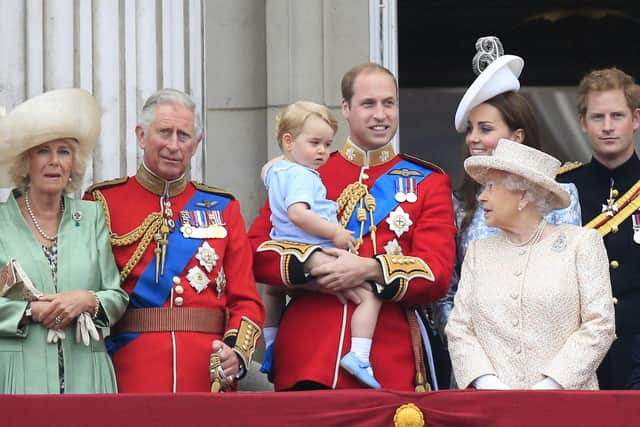This is how the Queen's death changes the line of succession to the throne
Just as her great-great-grandmother, Victoria, had lived long enough to see three generations of heirs, so she could take comfort that the royal line was assured far into the future.
And with the surge in popularity of the Royal Family as the 21st century dawned, the Queen was as sure as it was possible to be that the monarchy would survive and prosper once she was gone.
Advertisement
Hide AdAdvertisement
Hide AdThe births of Prince Charles, in 1948, and Prince William, in 1982, had been occasions of national rejoicing, and so too was the birth of Prince George on July 22 2013.


His arrival meant that it was unlikely that Britain and the Commonwealth would see another Queen for many generations.
In the months before George’s birth, Parliament passed the Succession to the Crown Act, removing the system of princes taking preference over their sisters in succeeding to the throne. Versions of the Act were adopted by all 16 Commonwealth realms over which the monarch reigns.
The system known as male preference primogeniture had been in place since the Act of Settlement in 1701.
Advertisement
Hide AdAdvertisement
Hide AdBecause of the 2013 act, George’s sister, Princess Charlotte, born on May 2 2015, remains fourth in line to the throne even after the birth of her younger brother, Prince Louis, in 2018.
But because the act was not retrospective, the Princess Royal remains behind her younger brothers, the Duke of York and the Earl of Wessex, in the line of succession.
Charlotte was the first royal princess to be born within the direct line of succession since the Princess Royal in 1950, and is likely to one day inherit that title, which is traditionally given to the oldest daughter of the monarch.
The line of succession to Elizabeth is headed by Prince Charles, who becomes King.
Advertisement
Hide AdAdvertisement
Hide AdIn the same year his mother turned 90, Charles turned 68 and will be the oldest person to be crowned King in British history, as well as holding the record as the longest-serving heir apparent, having occupied that position since the death of his grandfather, George VI, in 1952.
Prince William is second in line, and his eldest son, Prince George, third.
Princess Charlotte is fourth, and would only become Queen if George died before her without having children. Prince Louis is fifth, followed by his uncle Prince Harry.